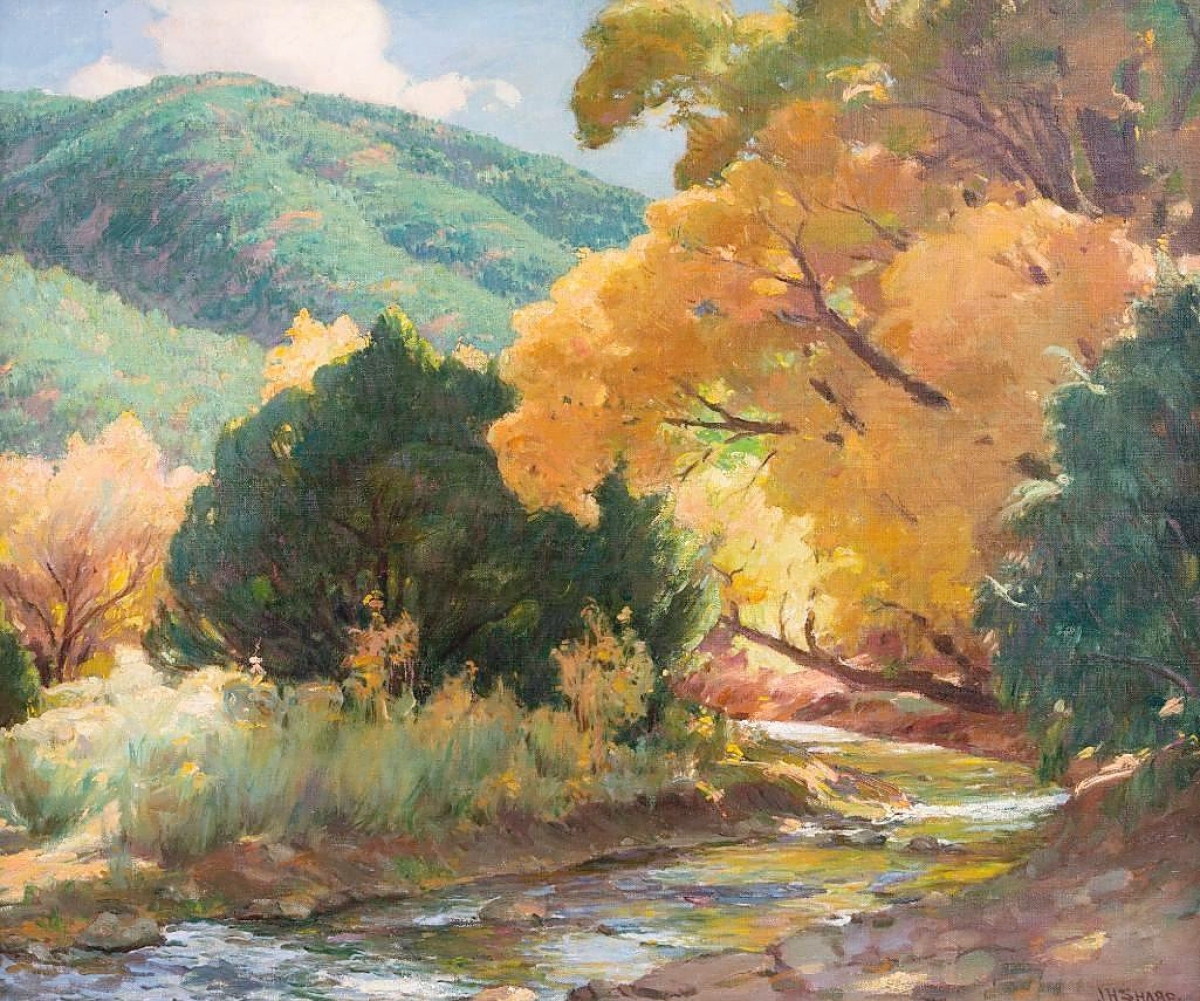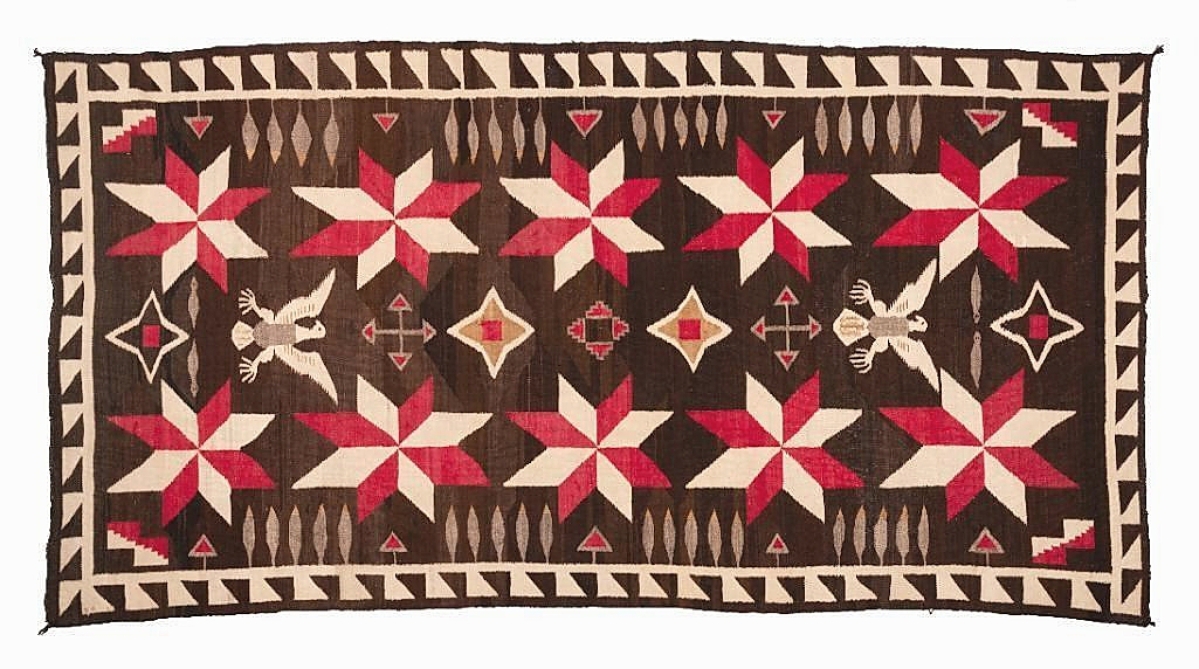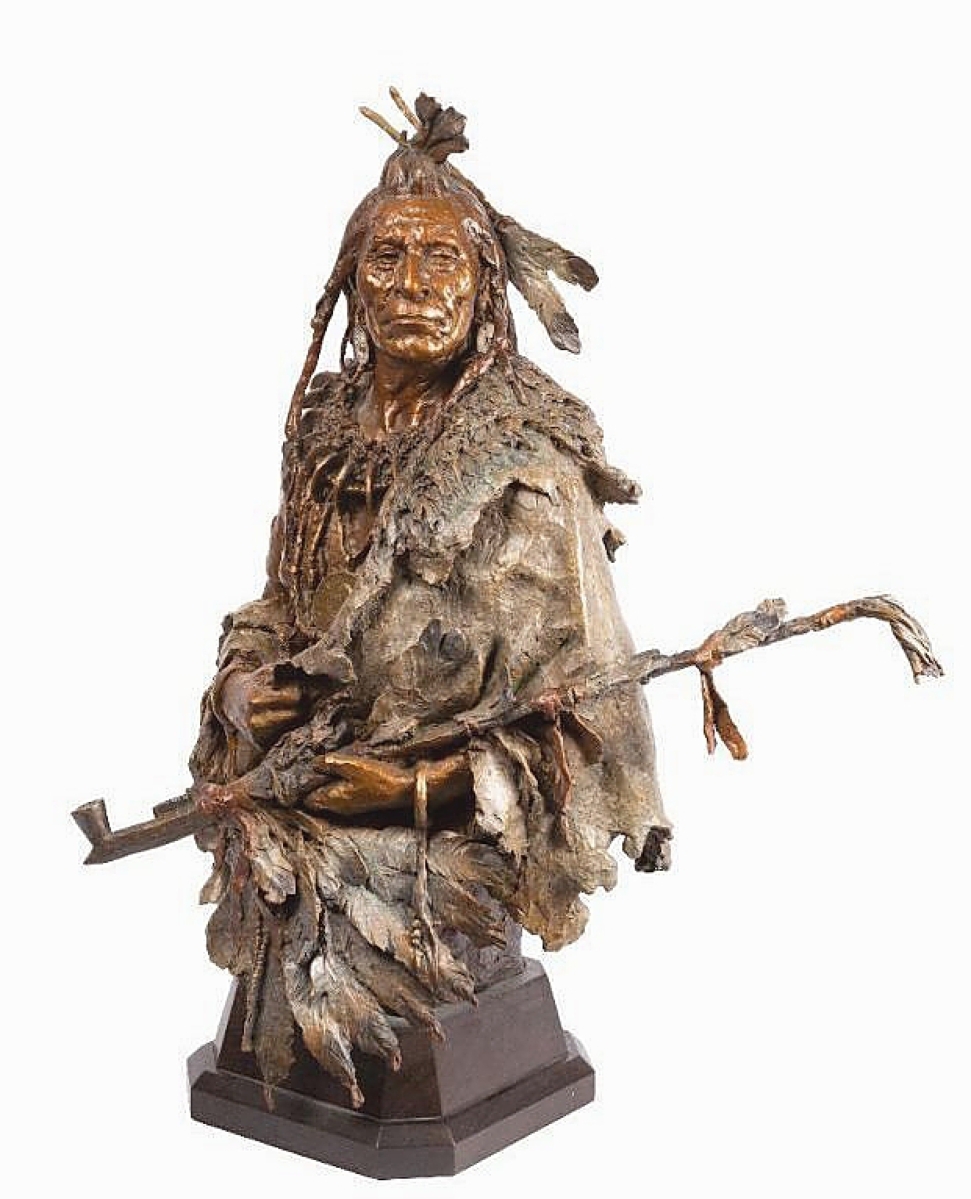
Tied for the sale’s top lot at $64,900 was Ty Barhaug’s (b 1963) “Pure Altitude,” a 21-by-36-inch oil on board. The result was a product of two buyers falling in love with the image. It had come from the estate of Washington collector Dale Popp, who purchased it at a 1999 CM Russell auction.
Review by Greg Smith, Photos Courtesy March in Montana
GREAT FALLS, MONT – “Last year our timing was the worst, this year was the best,” quipped Ron Nicklas following the 2021 edition of March in Montana, March 18-20, the annual Western Art event that combines a small dealer show with a broad auction to offer collectors the full gamut of choice and selection.
On the event, Nicklas said, “We followed the numbers closely, 25 percent of Montana had been vaccinated, so there was a comfort level. For many collectors, it was the first time they had been out this year.”
The sale was strong all around, Nicklas said, on both the dealer and auction side. The auction would gross more than $2.3 million. “If this is life after Covid, sign us up.”
The sale offered 32 objects and artworks from the collection of Robert Drummond, who established a sale with Stuart Johnson and Peter Stremmel in 1984 that would go on to become Coeur d’Alene Art Auction.

Tying for the top lot was Joseph Henry Sharp’s (1859-1953) “Taos Landscape,” a 30-by-36-inch oil on canvas that sold for $64,900. Ron Nicklas commented that both the size and the river flowing through it added to the importance of the work.
Two years later, he and his wife, Mary, opened Drummond Galleries in the same city, a specialized locale for respected Western American art. It would eventually become Coeur d’Alene Galleries.
Out of college, Drummond worked as a pharmaceutical salesman with a route through Montana, recalled Coeur d’Alene Art Auction’s partner Mike Overby. “That was in the 1960s and 70s,” he said. “He would go over there on his routes to see hospitals, and while he was there he met Western artists like Ace Powell. He liked the work, started buying some things, and then he’d come back to his office in Coeur d’Alene and hang it on his walls. His friends and business associates would be impressed and he sold a few things not really intending to. The lightbulb flicked on, he realized he could get out there and find work on the company dime and bring it back to sell it.”
Drummond developed a specialty in historical Western and Sporting art from the 1880s-1940s. “Charlie Russell, Frederic Remington, Carl Rungius, guys like that,” Overby said. “In the early 90s, I learned a lot from him, how to tell good paintings from bad paintings and art business knowledge. He would always share information with you. He was always known as a straight shooter in the business and would give you his unvarnished opinion for good or for bad.”

At $56,050, Elling “Bill” Gollings’ (1878-1932) “The Line Riders” went beyond its $40,000 high estimate. The work was a book example, published in Elling William “Bill” Gollings; A Cowboy Artist.
A write up in the catalog sheds light on some of Drummond’s humor. “Never buy a painting of a moose butt,” he once told a collector. To artists, he said, “If you want to sell more paintings, paint better paintings.”
Bob Drummond retired in 2006 to spend more time with his family and out on the rivers where he enjoyed renown for fly fishing. He passed away in 2020.
“A lot of the dealers that knew Bob over the years, they wanted to have a piece from his collection,” Nicklas continued. “It didn’t matter how major it was. We heard about a guy sitting at a bar while bidding on his phone app. He got one and yelled to the room, ‘I got a Drummond piece!’ Bob was just an icon of the industry.”
At the top of Drummond’s lots was an artist who was there at the very beginning, Ace Powell’s (1912-1978) “Napi,” a 24-by-36-inch oil on canvas, dated 1972, that brought $8,850. Nicklas said, “That was an important work by Powell and Bob was exceptionally proud of that. He hung it very prominently in his home.” Three other works from Powell would appear from Drummond’s collection, including the 8-by-14-inch oil on canvas “Scouting Party,” which brought $5,015, and a lot of two oils, “Blackfeet Scout” and “Plains Indian,” both 9 by 12 inches, that took $3,540. Reminiscent of the man himself was an etching by Hans Kleiber (1887-1967) titled “Fishing on Jackson Lake,” one of two etchings offered in one lot by the artist that took $590.

Clyde Aspevig (b 1951) produced this 2015 work, “Planetary Alignment.” The oil on board, 30 by 36 inches, had provenance to The K.T. Wiedemann Foundation and sold for $50,150.
Also featured throughout the sale were works from the estate of Dale Popp, a Northeast Washington collector who made annual pilgrimages to Western Art Week and CM Russell’s sales in the late 1980s-90s.
“All the artists knew him well,” Nicklas said. “When we got the collection, it came with many of the receipts and correspondence.” Popp’s tastes were wide ranging and did not focus in one particular image or region, Nicklas said. “He had over 450 pieces of art and it was all displayed – from room to room to room.”
Popp’s collection was led with a $64,900 result for a Ty Barhaug (b 1963) oil on board painting, “Pure Altitude,” which measured 21 by 36 inches. The work catapulted past the $8,000 high estimate as a result of two bidders falling in love with the harrowing snowscape featuring two cowboys on horseback leading a line of horses loaded with packs at the top of a snow ridge, a massive, jagged mountain rising up behind them.
The Barhaug went out at the same price as a Joseph Henry Sharp (1859-1953) “Taos Landscape” painting. Both were the top lots of the sale. “That was an exceptionally large piece, done later in his career,” Nicklas said. “I think what separated it is the water running through it.” The Sharp measured 30 by 36 inches.

Edward Bohlin made $44,250 with this silver-mounted presentation saddle with Kansas history. “Made for E.C. Roden” was written on the Bohlin shield on its seat.
Also from Popp’s estate was a $56,050 result for an 18-by-24-inch oil on canvas by Elling “Bill” Gollings (1878-1932) titled “The Line Riders.” It had been featured in Ward & Temple’s 2007 book Elling William “Bill” Gollings: A Cowboy Artist. A Frank Tenney Johnson watercolor, 10 by 14 inches, titled “Ute Indians” went out at $26,550.
Saddlemaker Edward Bohlin produced $44,250 with a silver-mounted parade saddle with raised silver buffalo head horn cap. The circa 1945 saddle was engraved “J.P.J., John Paul Jones, Garden City, Kansas” on the rear of its cantle, as well as “Made for E.C. Roden” on the Bohlin shield on its seat. Less common was a grouping of car accessories by Bohlin that were made for Art Miller and his Pontiac Bonneville. The group included Bohlin emergency brake cover, gas and brake pedals, a tooled leather steering wheel and the original receipts from Edward Bohlin. The group sold for $2,360.
California artist Jack “Jac” Elmo King (1920-1998) turned to painting full time following his retirement in 1970. He had worked as a mechanical draftsman for a number of aerospace engineering companies during his career to that point, settling down at night to the easel where he illuminated the canvas with Western scenes. “He didn’t start until late in life, and when he did, he signed with an agent in Calgary,” Nicklas said. “Much of his work has sold in Canada. We were a little nervous on bringing that in, but it sold super well and I think it will bring attention to an artist who has been forgotten in the States over the years.” A $38,350 result was found in “Fresh Mounts,” a 24-by-36-inch oil on board featuring a herd of horses. The work set an auction record for King. At $15,240 was “Finding Some Shade,” a 30-by-40-inch oil on canvas featuring horses in a forest that had descended in the artist’s family.

An auction record for California artist Jack King (1920-1998) was established with “Fresh Mounts,” a 24-by-36-inch oil on board that brought $38,350. When he retired in the 1970s, King took up painting full time and signed with a Calgary agent, pushing much of his work and market up to Canada. “I think it will bring attention to an artist who has been forgotten in the States over the years,” Ron Nicklas said.
Selling for $35,400 was a Winchester rifle model 1876 originally shipped to Granville Stuart in December of 1883. The .45 caliber rifle featured a 30-inch octagon barrel and came with an album of lineage and original letters signed by the previous six owners. It had an inscription on the sideplate that read “Granville Stuart from the Montana Stock Growers Assoc. Christmas 1883.”
Native American rugs were led with a Navajo runner with a Storm pattern, 136 by 56 inches, that matched closely to one found in JB Moore’s 1911 catalog in plate XXVII. Circa 1920, the firm wrote it was “by far the best Storm pattern runner we have ever seen,” and it sold for $16,520. A finely woven Navajo Teec Nos Pos weaving measuring 121 by 66 inches sold for $11,800. Not far behind at $8,260 was a circa 1920 Navajo rug, 105 by 45 inches, featuring kachinas, ravens, jay, crows, bows and arrows and feathers.
Contemporary Native American works found favor from George Flett (1947-2013) of the Spokane Tribe of Indians. Flett had four works in the sale, led by a $5,015 result for “Warriors,” a 36-by-48-inch oil on canvas featuring Native American warriors on horseback with spears in their hands. Flett studied at the American Institute of Indian Arts with TC Cannon, Kevin Red Star and Fritz Scholder.
At $6,490 was a monumental 72-by-60-inch oil on canvas by Malcolm Furlow (b 1946), titled “Rain in the Face,” depicting a psychedelic-colored image of the famed Lakota chief in headdress, who by legend carved out the heart of Thomas Custer.

A factory letter accompanying this Winchester Model 1876 .45 caliber rifle said it was shipped to Stuart Granville December 8, 1883. The known lineage chain traces from the Stuart family, Jim McGee, Charles Layson, Bob Allsop, Lee Pollock, Tom Richards and Dewey Schaffer of North Platte, Neb. An inscription on the sideplate reads “Granville Stuart from the Montana Stock Growers Assoc. Christmas 1883.” The rifle took $35,400.
Two works from Dan Cody Muller (1889-1977) appeared in the sale. Muller was the adopted son of Buffalo Bill Cody after his father was killed by a horse when the boy was nine years old. Muller would spend the next 18 years working with Cody on his Wild West Shows. Dan Cody Muller is credited with painting images of the American West and even completed three 100-foot murals for the Chicago World’s Fair in 1933. His work appeared in Esquire and other publications. The artist was inspired by CM Russell, whose influence can be seen in Cody Muller’s “War Party,” a 21-by-32-inch gouache that sold for $944.
“Results were great across the board,” Nicklas said. “Among the historical stuff, we had a nice Frank Tenney Johnson that was priced right and it sold very well. You don’t usually come across those works in that price range. There was good quality Gollings, as well, those are kind of difficult to come by.”
Coeur d’Alene Galleries set up on the retail side of the show along with about six dealers. Nicklas said, “We had a good show. Then there’s another artist show, similar to a pop-up, and a lot of those artists sold out.”
All prices include buyer’s premium. March in Montana will return to the Elk’s Lodge March 17-19, 2022. For more information, www.marchinmontana.com.























